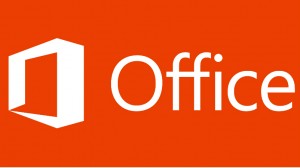Microsoft Office365 via ExpressRoute.

The implementation of the Office365 facility seems to be more the meeting of the supply and demand side naturally rather than the creation of something by Telecity Group. What is interesting is why Adi believes the demand side is there and what Microsoft has delivered to meet it. He explained:
“We are seeing fairly robust demand. In terms of Office365 specifically one of the things I would like to highlight is that the interest we are seeing from customers is the combination of the capabilities. To combine the creation of additional content with the real time collaboration and unified team communications capabilities that now become available. This is (now possible) because of Office365 combining with Skype for business and One Drive for Business that were already available.
“What this does for our customers is give them the ability to combine the act of creating additional content with the process of collaboration through which this kind of content is created anyway. Especially if you look at it in today’s context of geographically spread teams. What we think is likely to happen is the need to create additional content which companies currently do with on-premises desktop installations of Office will drive demand towards Office365 and ExpressRoute.
“So we expect that sort of demand to be separate and additional… to the demand we are seeing for IaaS break out, PaaS breakout or application breakout such as CRM. In fact we have done a fair amount of work around identifying about 9 use cases that we are seeing are driving end customer demand and we are seeing Office365 as being incremental to that.”
While Adi could not be drawn on why he thought Microsoft were opening up Office365 he did expand on the competitive landscape for Microsoft and what has made the difference.

“With services such as Office365 we are seeing the act of creating additional content with the need to collaborate in creating that content. There have been some other offerings such as Google Apps that do allow you to share documents or collaborate if you will. Some of those services miss the communications capabilities that for example Skype for Business and also the enterprise scaling capabilities such as SharePoint or OneDrive make available.”
Adi believes that there are two drivers for this demand. The first is that the cloud model works well for companies that want flexibility and agility in the modern world. The second is that Microsoft has delivered a combination of technologies that are not being delivered elsewhere and it is something that companies want. Adi explained further with the following example:
“If for example one of our customers opens up an office in a new location they no longer have to roll out a dedicated infrastructure to support that new office or new location as opposed to adding users to the Office365 subscription that they already have. All it boils down to is the same MPLS connectivity that a customer deploys to bring the new location online.
“That greatly simplifies and accelerates the business outcomes that our customer wants to achieve.That is broadly what we are seeing in terms of demand. The only thing I would say is that it is not just Microsoft with Office365. Most major players that have a cloud offering are trying to cater to this evolving demand.”
We questioned Adi specifically about the Office365 offering and what bandwidths were available. Microsoft announced that customers would be able to obtain links of up to 50GBps, but it appears that this may only be available in the US at the moment according to ADI.
“Right now what we support is 10Gbps connections but that is evolving and obviously there are different, higher speeds … when those become available in Europe we will be offering those speeds as well.
“When Microsoft make available higher speeds available in Europe for us it is a simple case of upgrading the port at the back end that we interconnect with Microsoft.”
What is interesting is that Telecity do not appear to directly benefit from Office365 revenue. The customer contract is direct with Microsoft and Adi intimated that there were not additional charges levied by Telecity to customers for that connection.
(Next: Conclusion)



























[…] announced connectivity to Office365, we spoke to Aditya Ayyagari,Group Head of Market Development at TelecityGroup in more detail about this announcement and what it means to both Telecity, its […]